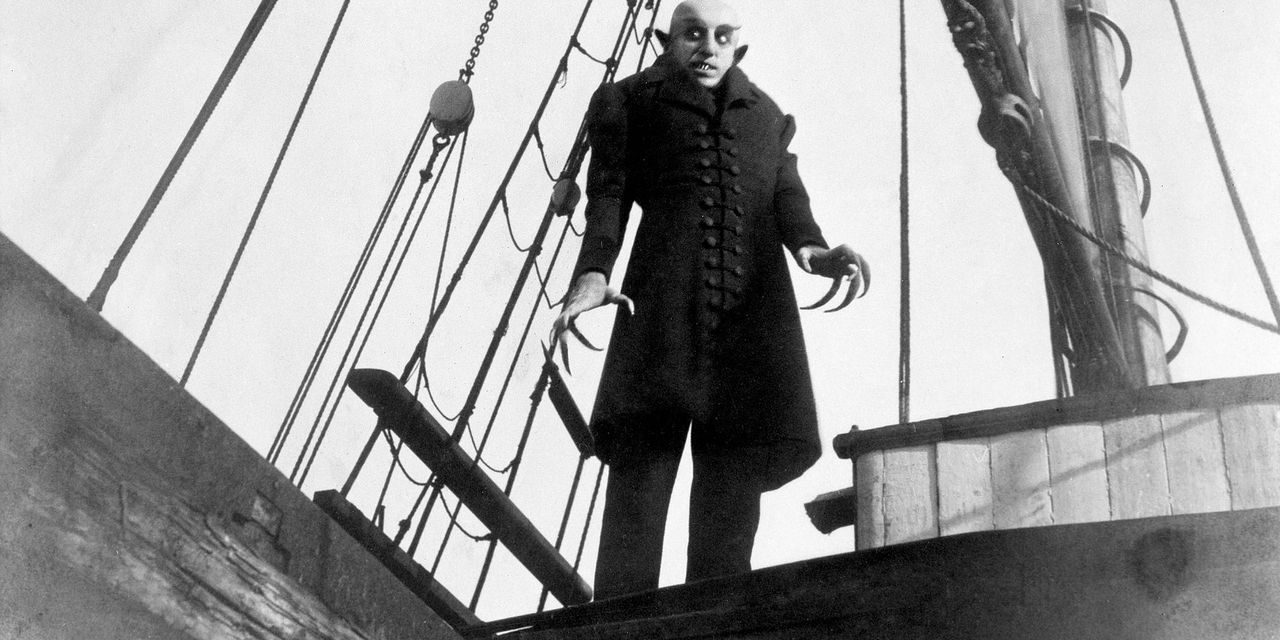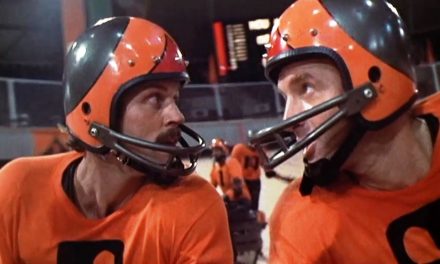
Are you excited about the new Robert Eggers film Nosferatu? I know I am. (I might even get the popcorn bucket!) What I find intriguing about his films is the in-depth study he goes through to make them. The Witch has dialogue only found in an Eggers film about colonial America. The brutality of The Northman feels so authentic to what I know of and think of when I hear about Vikings. This is why I think he’s the perfect filmmaker to recreate a silent classic.
When discussing film history, few films are as influential and hauntingly timeless as Nosferatu: A Symphony of Horror. Directed by F.W. Murnau in 1922, the film about a German vampire created the groundwork for what horror films could be. It wasn’t the first horror movie. In fact, it wasn’t even the first vampire movie. What sets it apart is how it uses the iconography of vampires to be more than a simple scare.
Silent films are much different than today’s movie-going experiences. When filmmakers couldn’t rely on subtlety or dialogue, the horror had to come from somewhere else. Nosferatu uses Bram Stoker’s Dracula as the basis to tell an eerie story with striking visuals that linger on screen. It forces the audience to confront the monster as it slowly moves toward them. Because of this, Nosferatu holds cultural, artistic, and historical significance that makes it a must-watch.

A Landmark of Cinematic Innovation
Nosferatu emerged at a time when filmmaking was still in its infancy, yet it showcased techniques that remain relevant even in today’s movies. Murnau’s use of shadow and light was groundbreaking, It created an atmosphere of dread and mystery that is central to the horror genre. The film’s monster, Count Orlok, portrayed by Max Schreck, is a masterclass in visual design. His skeletal frame, claw-like hands, and ghastly features are unforgettable. The image of Orlok creeping up a staircase, his shadow looming on the wall, has become one of the most enduring images in film history.
These innovations were not just stylistic but functional. Working within the constraints of silent cinema, Murnau had to rely on visuals to communicate emotion, narrative, and tension. This visual storytelling elevates Nosferatu beyond its era. When recommending silent films to first-time viewers, many from the horror and comedy genre hold up. They play to some of our most fundamental emotions—fear and laughter. For that reason, as well as its showcase in technical achievement, Nosferatu is a great beginner’s guide to the silent era of film.
The Precursor to Modern Horror
Nosferatu is often credited with establishing many of the tropes and techniques that define the horror genre. Count Orlok is terrifying and otherworldly. Unlike the suave and romanticized vampires seen in later films, Orlok is a grotesque and predatory figure, emphasizing the horror of the supernatural. As special effects advanced, we saw horror move away from gothic romance and into the blood, guts, and things that make us squeamish. Modern horror films like The Fly, An American Werewolf in London, or even The Substance owe their success to Nosferatu.
The film also introduced the concept of vampires as creatures of darkness harmed by sunlight; a detail that was not present in Bram Stoker’s original Dracula novel but has since become a cornerstone of vampire lore. These innovations demonstrate how Nosferatu shaped the storytelling and mythology of horror, influencing countless films, books, and television shows.

Nosferatu’s Cultural and Historical Context
Horror has long been a genre that emphasizes social and political moments. Nosferatu is a reflection of the fears and anxieties of its time. Released in the aftermath of World War I and during the German Weimar Republic; the film can be seen as an exploration of societal dread. The vampire, an unstoppable force, can be interpreted as a metaphor for the existential fears plaguing post-war Europe. The influenza epidemic had wiped out hundreds of thousands worldwide. The mass destruction of World War I left many in poverty and without direction. If Godzilla was Japan’s fictional answer to World War II, Count Orlock was Germany’s answer to World War I.
The film’s expressionist style—marked by exaggerated sets, distorted perspectives, and surreal imagery—mirrors the instability and disorientation of a society grappling with profound change. Watching Nosferatu today allows viewers to connect with these historical undercurrents, gaining insight into the cultural psyche of 1920s Germany.
Why You Should Watch Nosferatu
One of the most fascinating aspects of Nosferatu is its survival. The film is an unauthorized adaptation of Bram Stoker’s Dracula. After a lawsuit from Stoker’s estate, a court ordered all copies of the film to be destroyed. Fortunately, several prints survived, allowing Nosferatu to endure as a cinematic masterpiece. That’s just one of many reasons that silent-era films could have gone away. Some were burned in fires during World War II. Some simply damaged through wear and tear. Its resilience underscores the importance of preserving art, as well as the enduring power of great storytelling.
For modern viewers, Nosferatu offers more than just historical significance—it is a genuinely engaging and atmospheric film. Its silent nature allows audiences to focus on its visuals and immerse themselves in its haunting world. In our current era, it’s easy to browse through your phone while a movie plays in the background. You both see and hear enough to understand the film and can engage with the movie on and off from your couch. That isn’t the case with silent films. They demand your full attention. They demand you disconnect from anything else.
Ultimately, Nosferatu is a film that rewards viewers on multiple levels: as a piece of cinematic history, as a chilling horror story, and as a work of art that continues to inspire. No matter your background, Nosferatu is a meaningful film that deserves a place on your watchlist. Its shadows linger not only on the walls of its sets but also on the legacy of cinema itself.
For more on Movies, make sure to check back to That Hashtag Show.






![Blue Box Ep. 4 “If He Wins”: Let’s Get Serious [Review]](https://www.thathashtagshow.com/wp-content/uploads/2024/10/project_20241030_1228584-01-440x264.png)